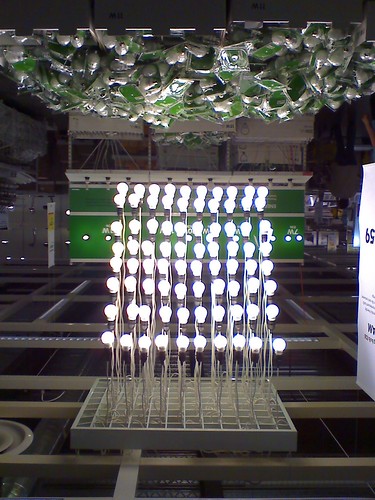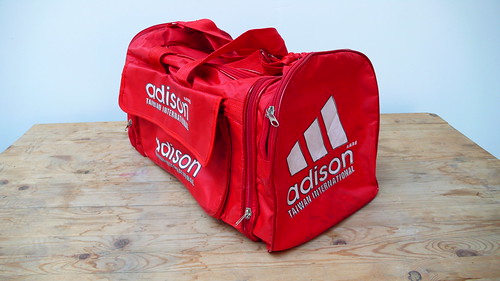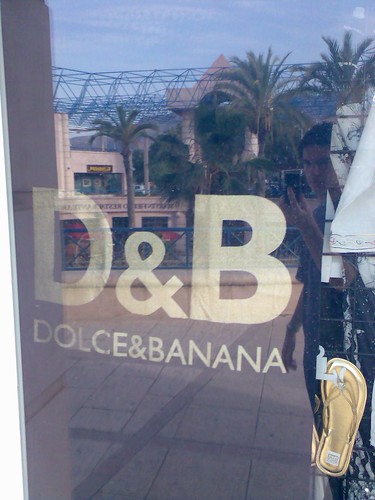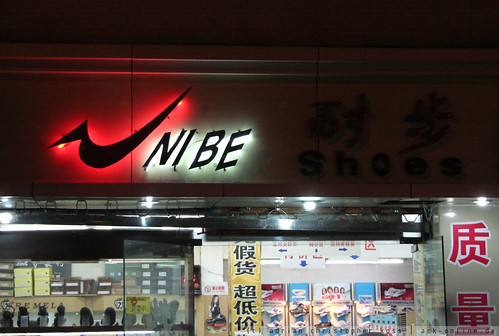Transformation of the American Marketplace, II.
Pseudo-Capital. Glitter without Gold.
Look Even Harder for the Meaning of Things.

(A version of this was briskly half-read in a panel at the 2009 Left Forum at Pace University. Many thanks to Jesse Goldstein.)
I
Things get slippery in the vicinity of culture and Capital, but poppier sensibilities can combine with critical purposes. It is possible. We can pick and choose, and I’ll try to explain. In some regards, I am a capitalist, in that I believe capitalism— in some form, not the one currently operating— is still the best economic model in terms of its logistical genius and structure of incentivization.
However, economics is not everything, nor should it be.
Capital— its demands and its ills— has to be checked, countered, and reformed by other spheres or rubrics of value, be they political or legal mechanism, religious institutions, media organs, or even more broadly, culture. As it stands today, Capital is pretty far from any sort Montesquieuvean equilibrium with other spheres or autonomies. Capitalism bullies them, encroaches upon them, and has succeeded in upperhanding everything into a reductive, economic universalism, or what George Soros has called “market fundamentalism.”

Thus I chime with the Marxian sentiment that capitalism, as ideology and as system, overruns and overdetermines most other modes of valuation and thinking. But it does not have to be this way, and rather than overcoming Capital altogether, I champion a strategy of pushing and pruning its mercantilism and “chrematistics” back down to proportion, at every level… The harder edges being regulated by political and legal muscling, on the public behalf; while on another level— just as important as material conditions— we counter the encroachment on the plane of “the meaning of things.” A task nicely suited to Culture.
Culture that can do this, that does not merely superstructurally reflect its economic or historical conditions, ideas that are more than ideology, I’ve usually called “strong culture.” Strong culture must drum up bold, varicolored, and even mythic interpretations of our lifeworld, daring even to lay non-economic glosses over gritty, hard-edged economic realities. It has to enter the now-ubiquitous Marketplace— I mean, we step off our front porch and straight into the bazaar— and infuse industry with new desires and impulses, free of the moneythink and reckoning of Capital, being politically-useful without being manifestly politicized.

This was what I meant by “transformation” in earlier essays on the market. Spending entire weekends and weeknights, in the malls, in the aisles, in beautifully-black parking lots, playing lifegames that transposed new desires onto the old realities of banks, hair salons, and hardware emporia. Strategy games with merchandise. Shell games with return policies. Roaming the shopping mall marble, lost in peripatetic inquiry, nerves tweaking on theory and soda. Climbing and hiding in the backrooms and rafters. Misusing IKEA like a living room and Barnes and Nobles like a public library. Reading Astroland into the American Shopping Mall. I was rhapsodizing on a time-honored teenage rite, brought to new intensities: entering the business sector with distinctly unbusinesslike intentions and performing a subtle, sociological kind of teasing or leading-on. A working-free.
Some peers have remarked that, though amusing maybe, these transformations were, in the final tally, neither constructive nor consequential; because they did little or nothing to alter the underlying structure, the nuts-and-bolts of material conditions in a universal way… And I really could not disagree more. This “screwing around,” even in its silliest, classically-suburban, Chinese Fire Drill manifestations, this bringing of non-economic impulses to economic realities, is a kind of emancipatory practice, a necessary branch of strong culture, a popular tactics played within the given parameters of the modern world.

The encroachments of Capital bully as much in their injunctions and expectations— in our responses and behaviors— as they do as material givens and solid commodities. We keepers-of-the-flame have to meet these injunctions and expectations head-on with forms of misuse and mythopoeisis, by switching up what Michel De Certeau calls our various ways of operating. De Certeau himself says:
“the actual order of things is precisely what popular tactics turn to their own ends, without any illusion that it will change any time soon. Though elsewhere it is exploited by a dominant power or simply denied by an ideological discourse, here order is tricked by an art. Into the institution to be served are thus insinuated styles of social exchange, technical invention, and moral resistance, that is, an economy of the “gift,” an aesthetic of tricks and operations, and an ethics of tenacity (the countless ways of refusing to accord this order the status of a law, a meaning, and a fatality).”
Far from being inconsequential, our Screwing Around, as lightmindedness, is even more paradigmatic as precisely this refusal to “accord the order the status of a law, a meaning, and a fatality.”


This tactical reimagination of things does not have to be, so much, a negative project, a tearing away. Once new desires have been transposed on the old forms, those shiny, glittery forms have become, at least partially, redeemed. Something new. And this conforms to my experience, growing of age in Virginia Beach, Virginia, a seaside horizon of sprawl and blinking 24-hour commerce. That is, despite its maybe-pernicious aims and origins, I grew to love the formal particulars of Capital and many ideations of the American mythos. Phenomenologically. On the level of myth and ritual. To this day, as you may know, I love cheeseburgers, soda fountains, drive-thrus, bubblegum machines, stripmalls, cineplexes, doo-wop, hip-hop, Pulp Fiction, American Graffiti, videogames, cartoons, mass production, priceguns — all of it— all the flora and fauna of the American Marketplace. Because, working within uncooperative modalities of action— and never really ever purchasing much of anything, maybe besides candy and soda— we had extracted a Sublime from this landscape, from say, the Pottery Barn. It was extensive with a zealous faith in the transformative Sublime; the idea that everything in our surroundings— even the lowliest and most vulgar— carries within it a resonance of infinite possibilities that can be released by inspired thought, force, and action. It just needs that certain turn to liberate it from its seemingly intrinsic qualities: Recuperation


It seems natural, then, given my tendencies, given my personal delights, that I would pursue slightly divergent critical strategies. Instead of tracing and dismissing these forms as ideological outgrowths, instead of revealing and attacking the market conditions of their possibility, or modes of production, I want to find ways of keeping their virtues while discarding their vices; a way to hijack a very successful, seductive idiom and put it at the service of strong culture. Afterall, all these particulars were often selected by markets and focus-groups for pretty level-headed reasons: for their ease and efficacy, their utility, or simply for their candy-like appeal. Why would strong culturists, or counterculturists, simply relinquish these hot little items to the other side? Why not instead enter into the Marketplace, scope it out, pluck what we can, then reproduce it within the sphere of strong culture, as a form of recuperation, or even as mimicry or parody— again, as a kind of teasing?
Like our Institute semi-explaining itself within the format of promotional videos or tri-fold brochures. Or, my adoption of the Skymall idiom. Or, for instance, American cultural collectives working with the methods of advertising, hype and publicity— posters, slogans, screenprinting, stickers— but in the pursuit of the Sublime, the Beautiful and the Interesting. Why not raid the Marketplace as a repository of method and metaphor?


Okay, let’s take another example, a real hallmark of Capital— The Store, as a form, as a typology. The Store is, truly-truly, the front guard of capital, right? Rarely considered a real vehicle of culture, as we might galleries, venues, spaces, or libraries… Nevertheless The Store, for me and millions of Americans, is a very comfortable and easily comprehensible typology. From experience, we all understand its workings, its contours, its bells and whistles. The toystore. The skateshop. The record shop. The bookstore. The browsing and window-shopping. The pleasing geometries of layout and display. Why would we not steal or borrow The Store, as a well-loved, commercial shape, for the transmission of strong culture? Stores are used, of course, only usually in its original function: for moneymaking. Museums might have stores to fund upkeep. Libraries open up cafés on their mezzanine. Spaces dedicate a corner to pawn off some cultural wares. But this use of the form is still as an outpost of Capital; well-intentioned perhaps, but certainly no reclamation of the form.


So I was excited when my highschool sweetheart, Sienna Cordoba, opened up a store on the premises of the Philadelphia Institute for Advanced Study. This paragon of pseudo-Capital is a store in nearly every sense: she packages, she merchandises, she restocks, she labors, and she arranges everything in mouth-watering displays. She offers cornerstore services like haircuts, nailpainting, and advice on the self and romance. She advertises, cuts commercials… Even going so far as to make sales and move product. The only catch is: all the exchanges are for pennies on the dollar. A mere shadow of the retail value. Sienna has committed the whole operation to principled liquidation, to remaining a purposively money-losing operation. En fin de compte, what do we have here? A store sheerly on the level of myth and ritual, running on a gift-impulse rather than market-economy. A blur of the work-leisure distinction. A total negation of the telos of capital.
It runs on enthusiasm, and— man— has the community responded in kind. And for a reason. Here’s a thesis: that the cultural assumption of previously “uncultural” forms always results in a surge or release of cultural energy. Recuperation— in this sense— leads to the combustion of energies hidden in that form. This is what Huelsenbeck meant when he claimed that the Dadaist was a man of press, advertising, and sensation.
We can close our eyes and envision entire shopping malls, housing the cultural exchange of tomorrow, with all the human disciplines arranged as nextdoor neighbors, by the Dewey Decimal system, along an open and well-lit promenade. With a calming fountain in the middle of a conveniently-located food court. It may seem a bit fantastic or even tacky, but no more so than the way former centers of oilsoaked American industry— like cavernous warehouses and mill buildings— today house a good share of our own American cultural production. Even the scummiest, scammiest forms could be détourned and redeemed: spam, telemarketing, used car dealerships, pawn shops, automatic teller machines, reposession, pseudo-Latin pharmaceutical branding, Amway… I myself can spend a whole afternoon in Staples, drunk on self-suggesting possibilities.


Taking it a step further, this appropriation of forms includes the appropriation of formal qualities— the surface aesthetic of Capital, its tastes and sensibilities, as it were: its brash maximalism, its sharp lines, bold colors, tackiness, trinkets and technocracy, its freneticism and cleaner mass production— everything that we can probably bundle up as a Pop-sensibility. And having grown up in this buzzing, bubblegummy environment, like many, I do appreciate it on an aesthetic and phenomenological level. I identify with it, that is— much more than with other more politically-palatable sensibilities. I’m thinking here of, maybe, the dingy black and demeanor of much anti-capitalism. Or the serenity, naturalness, and soft color-palettes of social consciousness. And at the end of the day, I don’t even like the overall “aesthetic” of art.
And while, at first, this seems spurious to dwell on, you have to remember that critique often presumes a distaste for these flashy phenomena in its rhetoric. As symptomatic. As telltale signs of Happy Unconsciousness. That is, it often presumes a distaste for all pop tastes, which is kind of a disastrous premise if you think about it. Likewise, affirmations of pop-sensibilities have been construed as an affirmation of its underlying structure. Some have argued that Warhol was himself a kind of living, breathing experiment in the totalization of Capital. Or, more recently, you might think of figures like Jeff Koons, who went from Wall Street commodities broker to an artist who capitalized on a very ad hominem vocabulary of the mawdlin.
I love these guys, but I myself have changed my mind on this interpretation. I do not think that structure and sensibility are that snug. And that’s the thing: caught on the horns of this false dilemma, me and a million others need to unlink this liaison, and find a way of combining critical and pop sensibilities in something other than a purely negational irony. A way to enjoy all the snazz, flash, and fun without actually giving real dollar-power to, say, Pepsi. Or, in the employment of this vernacular, without naively extolling Pepsi-qua-Pepsi, Pepsi the corporation, Pepsi the employer. This means borrowing liberally from the sea of pop-media— all the things we love— even in its signatures and trademarks, yet finding room for disjuncture and discontent where necessary, to tease and properly parody its aims and origins. This is an easily misidentified species of parody and appropriation, mistaken either for its source or its strict negation.
Consider the delineators of the American Baroque— including collectives like Dearraindrop, Paperrad, and Beige, individuals like Peter Saul, and progenitors like Stuart Davis and Eduardo Paolozzi— taking the once-commercial elements of the American mythos and reworking them into critical or semi-mystical imagery. These guys are working with something other than just a neo-pop. They are working with more insolence and ambiguity, severing living symbols from their origins and rejuvenating with new meaning. Recuperating them. And you can really sense these forms burning bright, though in a new hue.
II
I’ll give another example, more parodic in character: Rowan and Hastings, the brandname for the conceptual musico-performance products of Gavin Riley and Nate Holt. I usually drape Rowan and Hastings in glowing and golden terms, making sure they are not mistaken for being just a novelty-rap-parody-powerpoint-gag-media-team… which I guess they are, too… but with a substance and subtlety often missed by the casual— and wasted— observer.
Rowan and Hastings are the Martin Kippenbergers of the American suburban avant-guarde. Incredibly sophisticated device working within the vernacular of youtube and powerpoint, highschool parties and hollywood highschool parties, buffalo wings and sports jerseys, prog and yacht rock, and other day-to-day American cultural stock. Greatness forged on the flat grey carpets of their parent’s basement floor. They are screwing around, just as they are speakers of that vernacular. Nevertheless there is, we could say, a surplus-meaning that gets lost in the fog machine.
Their critico-affirmative parody cuts so close, it is often mistaken for the elements it draws on, or for far less impressive dick-in-a-box, joke-for-jokes-sake creations working along the same lines. Rowan and Hasting inserts, sidenotes, and jagged edges are so well-formed and telegraphic that they will probably be indecipherable to the near-distant future.
I remember on one evening, Gavin, in a solo project, taking the microphone and nailing what from first appearances seemed like a Chicago-ish karaoke rendition of a love-ballad entitled One More Shot at Love. Throughout the song, I was floored— he had really pegged the sentiment and tenor of the sensibility, I thought. Heartfelt. Atmospheric. A love-ballad with a emotionally complex delivery. Only afterward did I realize it to be a Gavin Riley original. It was a parody without ridicule.
Every time Gavin sang that song— or one of the much-lauded duets with Jennifer Rice— something bolder and more convincing was at work. A defense with a mildly polemical aire. Entering and defending a pathos that he believed, as he later revealed, “was ultimately inside of all of us.” Something we all experience, however loathe we are to admit it. And why? What exactly is the purpose of this suppression? When Jen and Gavin nearly broke my heart with a Neville and Ronstadt cover, redeeming a sensibility previously alien to me, making me susceptible to new Beauty, it did immeasurably more good than would a Greenburgian distancing from top-forty popular tastes. A new intelligibility.
And this is exactly it. They are speaking in vernaculars, but in a way destined to elevate it as Dante did Italian or Meister Eckhart, German. Which seems ridiculous, to compare Nine Inch Nails to medieval Italian, but this is how all vernaculars seem before the first poets— vulgar and futureless. But the assumption of a voice can transform us. Parody, as re-creation, as reconstruction, as Erfahrung, allows us to understand things from the inside of the experience— and things we might not otherwise be willing to give half a chance. Not to say Rowan and Hastings always parodies sheerly as a form of poeticization. Sometimes they sting and turn rather to close satire. To Indian-burning dissimulation that few can approach with such precision and talent. Watch the Good Day Live clip above before reading on.
The genius of this overdub lies in its conceptual purity, the very thing that truly completes the defamiliarization of this clip, and unrolls the inanity of this dialogue on Malteasers, Bush, Michel Jackson, Siegfried and Roy, and whatever else dribbles out of these people’s mouths on national television. Rowan and Hastings— and whoever else helped in this excruciating exercise— have successfully riffed on both Good Day Live patter and, more generally, the form of the overdub. A step ahead of the youtube universe. Television turned in on itself. The overdubbers painstakingly learned and rehearsed the original dribble, and by a work of high resemblance, pulled off true, sharp-toothed satire. Folly and foible denuded before a perfectly polished mirror. Some questions then… How close can these high resemblances get and what happens when they crisscross all lines? How do these “entangled orders of simulacra” send-up the rhetoric of authenticity that circles of “counterculture” have been working with for so many years?
III

I recently— just a few days ago— returned from a month-long stint in India, whose bazaars were selling the seeds of another, goofy pseudo-capitalistic tactic: the hidden power of Offbranding. Addison Bags, handmade Pepsi bags in burlap, and Givson guitars— Hindi mock-ups of the American maker. Thoughts led back to the handpainted signs and billboards of Latin America, with their fauvist renderings of Coke and Snickers, or their wobbly, polarized versions of Mickey Mouse and Donald Duck hocking ice cream cones.
There’s a latent, critical strategy to this stripe of dissimulation and high-resemblance. Of course, the Indian, Chinese, and Latin American producers of these simulacra were working in earnest emulation (or under the grind of cultural imperialism), but what happens when desperate imitation turns to open mockery, into a weird Weird Al parallelism?
In this orgy of copy-infringement, you can sense the cultural combustability, a delirium in waiting. Or in the stock of Manhattan street corner commerce, in the Bootleg, the Knock-Off. D.I.Y. Fendi. Dolce & Banana. If and when this fakeness, this sham-glam, can be flaunted and openly cultivated, it becomes a sly critique of luxury itself. And not only critique: with the knock-off, we can slake our need for bling and glitter without capitulating to market-ideals. Lipstick leftism. To openly prefer the rhinestone to the diamond is to lampoon the ideals of Capital, rather than just its trappings… A prima facie indistinguishability from the idiom of Capital, paired with a “moral resistance,” a separation from its source only where desirable… Weird advice coming from a someone who looks like a car-thief, but still… I’ve begun to amass my new wardrobe. Fake Gucci wallets. Plastic-gold watches for Sienna. A hot Rolex tee with the slogan “The Four Amigos” written overtop… Clean socks.
The lesson here is unmistakable: we can and must free things from their history and genesis.




